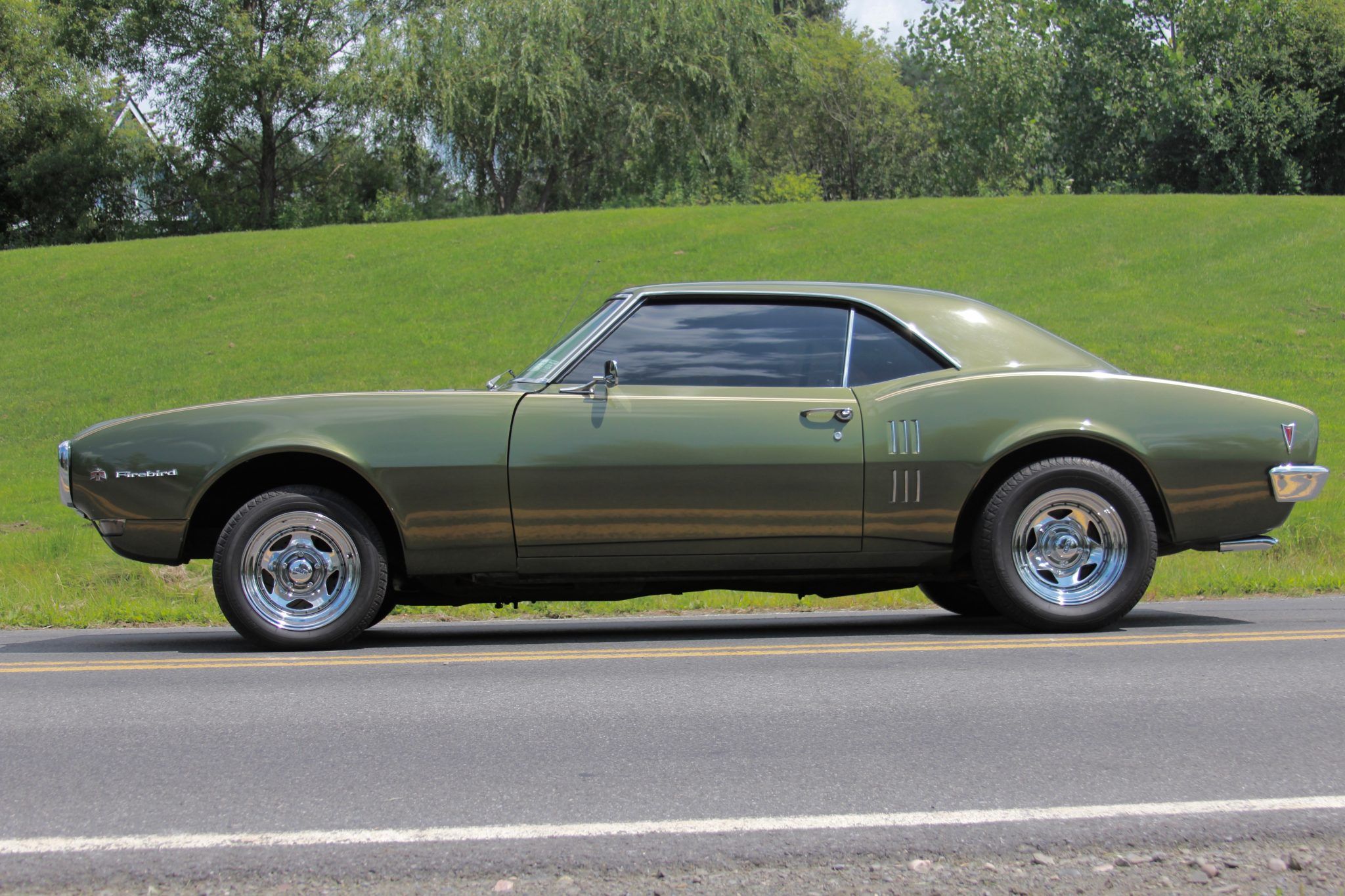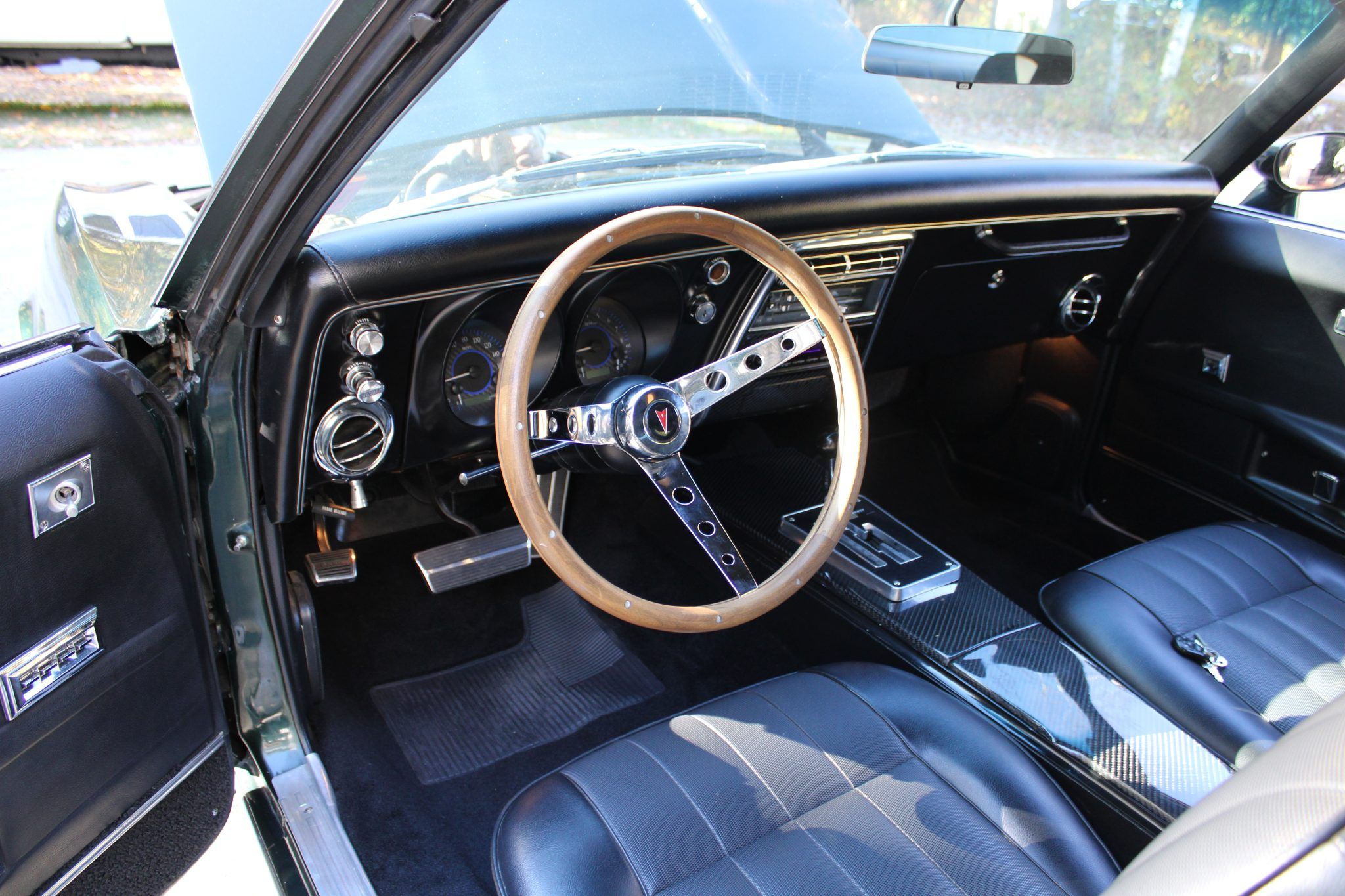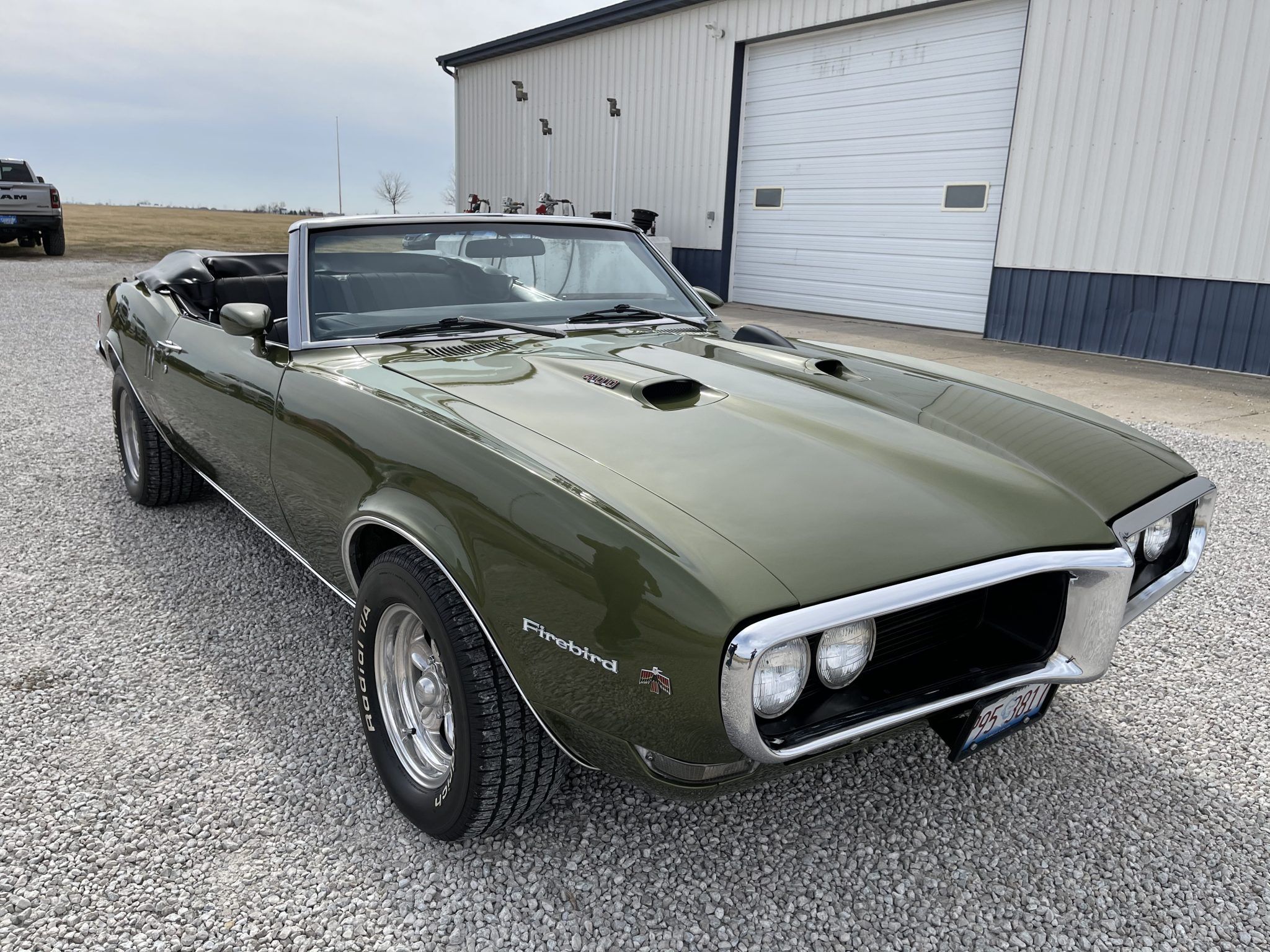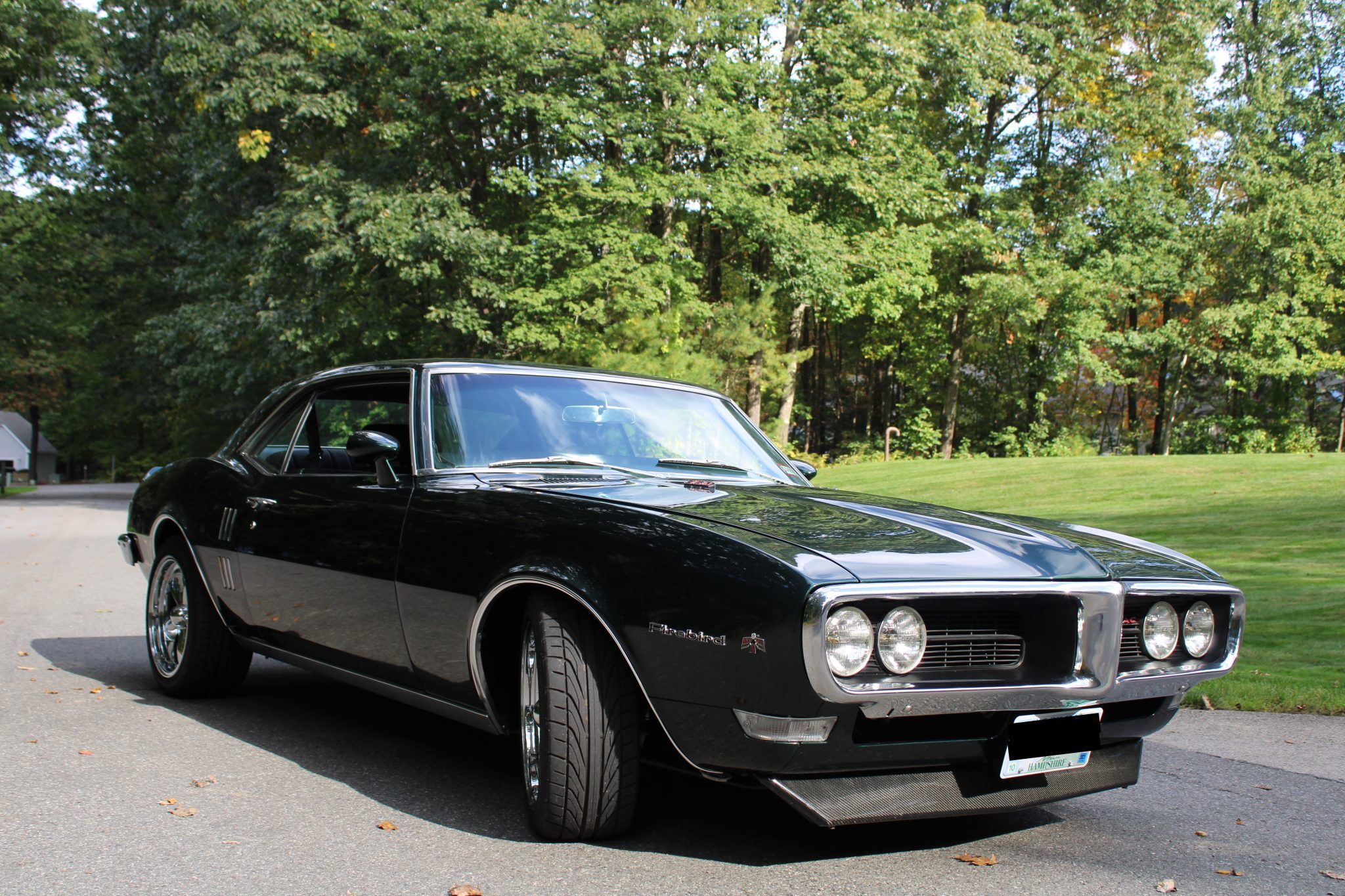The Pontiac Firebird dominated the American muscle car market from 1967 to 2002. The vehicle’s rivals were the Chevrolet Camaro and the Ford Mustang; these vehicles had a fierce battle throughout those years.
Pontiac released the first vehicle in 1967; the design came from the Camaro’s F-Body design and the GTO’s A-Body drivetrain. Yet, the car had a different rear end, a sub-frame, six vertical louvers on the front of the rear quarter panels, and louver-type tail lamps.
Pontiac made improvements to the engine positioning, front suspension, and stronger rear springs. The vehicle car had five stunning versions and was available as a convertible and a hardtop coupe.
Pontiac didn’t make many improvements to the 1968 model, although it did offer five different engines and trim levels. But the interior and exterior of the vehicle had some significant improvements.
The 1968 model also came with a hardtop and convertible option. The Firebird OHC was the entry-level model, with a 250 cubic inch overhead cam six-cylinder engine producing 175 horsepower.
The Pontiac Firebird came late to the Pony car competition that already had vehicles like Chevrolet Camaro and Ford Mustang, but it still stole the show that year.
This is why we love the 1968 Pontiac Firebird
The 1968 Pontiac Firebird Has A Delightful Body & Interior

The Pontiac engineers weren’t messing around when it came to designing the car’s body. Turn signals with a wrap-around design replaced the driver and passenger vent windows of the 1967 model. Pontiac upgraded the Firestone E70 Wide Ovals tires to F70.
They added a Pontiac V-crest rear marker lights and replaced the single-leaf rear springs with those developed and manufactured by Pontiac. The engineers placed new straddle-mounted shock absorbers that made the suspension system.

The interior came with a bigger cushioned instrument panel and sun visors, windshield pillar moldings, crushable armrests, and a flow-through ventilation system with adjustable round air outlets on the lower dash.
The designers added a lower door panel carpet, new instrument panel conical lenses and block lettering, and seat belts with push-button buckles for all passengers. The car came with an anti-theft ignition key warning buzzer and more robust door hinges of stamped steel for security.
Pontiac upgraded the Firebird; some changes included the addition of a four-way power bucket seat, a Goodyear Polyglas tire, and an optional new Power-Flex fan on all V-8s without air conditioning. This Firebird model had a long list of standard equipment, options & accessories.
The 1968 Pontiac Firebird’s Hardtop & The Convertible Options Were Amazing

The base convertible cost $2,996, and Pontiac made 16,960 units. While convertible sales increased (by 9.22 percent), they did not expand at the same rate as hardtop sales. Convertibles weighed around 300 pounds more than comparable hardtop coupes and had the same engine options. They came with a 215 horsepower engine and a four-speed manual gearbox.
The hardtop base models came with standard features like all-vinyl bucket seats, a wood grain dash, and 2-speed windshield wipers. Larger engines, heavy-duty suspension, wide-oval tires, floor-mounted shifters, and dual exhaust were available on other hardtop models.
Pontiac made 90,152 models of the hardtop. The base model had an MSRP of $2,781, with different engines costing anything from $116 to $351. Other alternatives, of course, came with extra costs.
How The Pony Car Competition Played Out

The pony car name came from one of the most successful cars in automotive history, the 1964 Ford Mustang Classic. Many car designers tried to copy the car’s design but failed, but some, like the designers of the Pontiac Firebird, had their algorithm, and it worked for them.
Some can say that pony cars are a less expensive alternative to muscle vehicles. These automobiles are tiny to mid-sized automobiles focusing on sportiness and, in some cases, performance.
Some of these pony cars were not high-performance vehicles. Still, the public considered the pony cars with powerful V-8 engines as muscle cars, and their performance was comparable to or even better than the mid-sized muscle cars.
The 1964 Ford Mustang was the first pony car, and it was a huge hit, selling over 618,812 units. The Camaro-based Pontiac Firebird, the Mercury Cougar, and the AMC Javelin joined, and it started becoming a competition. Dodge came late to the party with the Dodge Challenger.
In 1968, the Mustang was still selling well and leading the pony car group in sales, but it was already seeing a drop in sales due to the new competition. The Pontiac Firebird and the Mercury Cougar were in a tight duel in 1968, with almost identical production numbers and both behind the Mustang and Camaro.
Only the Mustang, Camaro, and Firebird would be left standing in 1975 since the other cars were unable to keep up with the changing times and preferences. Throughout the 1990s, the Mustang continued to compete with Chevy’s Camaro and Pontiac’s Firebird. Still, it began to win again after providing consumers with a variety of Mustangs to meet their needs.
The Firebird and Camaro stuck with horsepower and performance as their selling points by the mid-1990s. Unfortunately, sales of such cars began to decline as customers favored light trucks and sport utility vehicles.
In the years 2001-2002, GM began to phase down the manufacture of these cars. As a result, the Mustang was the sole survivor, and in 2005, they produced a retro-style Mustang.
Read Next
About The Author
